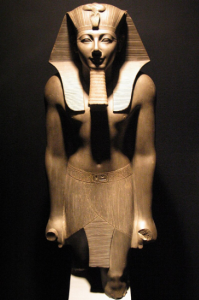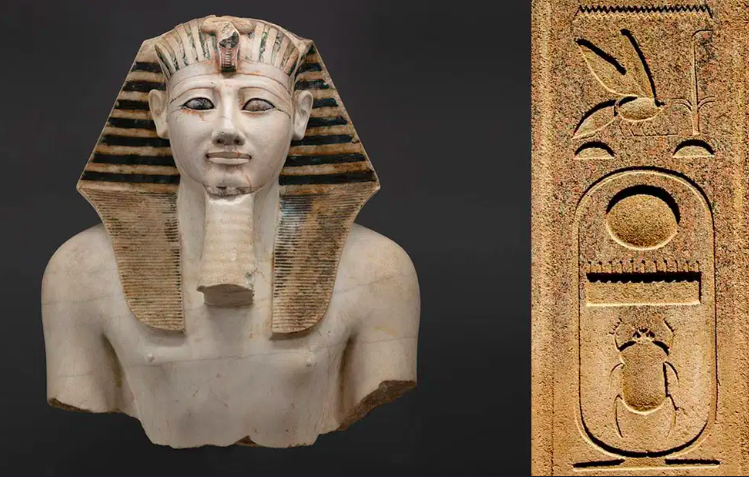King Thutmose III (Founder of the Egyptian Empire)
King Thutmose III is considered the greatest king of ancient Egypt. He expanded the Egyptian Empire to the middle of Africa and as far as Turkey in Asia. Thutmose III famously stated, “We are the nation that established morality,” signifying that the entire Egyptian civilization was founded on ethical principles. He ruled after Hatshepsut and constructed most of the structures of the Karnak Temple, particularly the Holy of Holies, and “Akh meno” Temple which is part of Amun-Ra temple, there is a stela called the “Ancestors’ Tablet,” one of the most important sources of ancient Egyptian history. It lists the names of kings from the Old Kingdom up to Thutmose III himself (currently housed in the Louvre Museum in Paris). Thutmose III left us a remarkable legacy in the “Akh meno” Temple, the oldest zoo in the world. Here, we can see depictions of all the animals Thutmose III brought back from his conquests in various lands. One of his most significant contributions was his pioneering role in political and military strategy. He brought the sons of princes from the conquered lands to Egypt, educated them, and instilled in them a sense of belonging to Egyptian civilization. This policy was later adopted by the British Empire in the 19th century. In terms of military tactics, during the Battle of Megiddo, Thutmose III faced a choice of three routes to reach the city (in Syria). Two were easy but would take a month, while the third was difficult and narrow but would cut the journey to ten days. He chose the challenging route, surprising his enemies and inflicting a crushing defeat. This strategy was later adopted by the British General Allenby in World War I, leading to his victory over the French. Thutmose III was also the first to divide his army into three divisions: center, right, and left. He built the most complex tomb in the Valley of the Kings, which was discovered by the French archaeologist Victor Loret in 1881.






